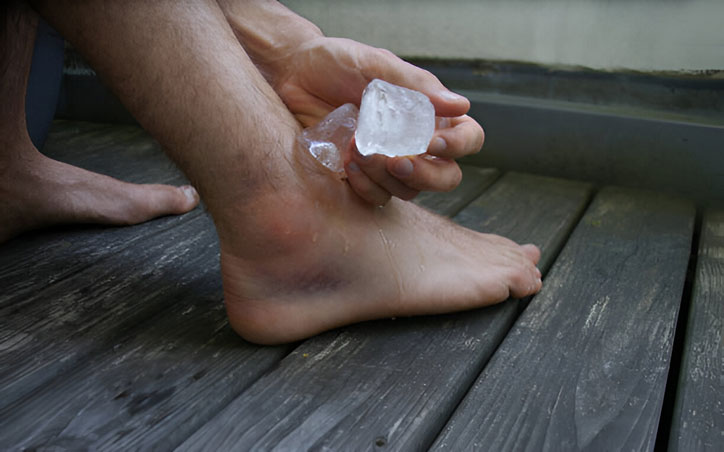Ankle sprains are a very common experience. In fact, most people will experience a sprained ankle at least once in their lives. These sprains occur when the ligaments in the ankle stretch beyond their normal limits. While ankle sprains are not life-threatening, severe sprains can lead to a weakened ankle, thus making some activities harder for the affected patient. Fortunately, as research on regenerative therapies has advanced, various forms of regenerative medicine may be able to help strengthen the ankle of those who have experienced sprains in the past.
Sprained ankles are caused by ligaments being stretched too much. Ligaments exist in the body to help stabilize certain joints such as the ankle. However, during certain activities such as sports, during a fall, or even while walking on uneven ground, the ankle can be twisted in a way that stretches the ligaments too much. This is painful and ends up leading to a sprain.

Most sprained ankles are minor and, thus, recover with minor effort. In most cases, rest and ice, compression, and elevation are enough to help those with a minor sprain. Over the counter medicine can be taken for any pain. And typically, minor sprains heal within a couple of weeks. However, more serious sprains may call for crutches, physical therapy, and in extremely severe cases, surgery. Severe sprains may take six to twelve weeks to heal fully. Regardless of the level of sprain, rehabilitation is important to help strengthen the ankle joint. Patients who follow through with rehabilitation are less likely to have more sprains or suffer from joint instability in the future.
One of the main reasons people experience recurring ankle sprains or instability is because once the ligaments are overstretched, it is very difficult for them to be fully strengthened again. One of the cutting edge medical technologies now in use is various regenerative medicine techniques. Platelet-rich plasma injections can help to regenerate tissue in the ligaments, thus strengthening the ligaments in a way that rest, ice, physical therapy, and surgery cannot. Harnessing the body’s own healing capabilities to regenerate ligament tissue is an up and coming therapy that can add to the current methods of addressing ankle sprains. The ability to use a therapy such as platelet-rich plasma, which has very few side effects and risks, to help strengthen the ankle after a sprain is revolutionary.
Almost everyone will experience a sprained ankle at some point in their lives. Whether it is caused by playing sports, walking on an uneven surface, or falling, sprained ankles are almost inevitable when living a normal life. Fortunately, most sprains are so minor that simple first aid is enough to get the person back to their normal activities. However, some sprains are more severe, requiring crutches, physical therapy, and in some cases, even surgery. What none of these treatment methods do is strengthen the stretched out ligament. Regenerative medicine is gaining popularity in the medical world. It is now being used on patients who have experienced an ankle sprain to help strengthen and regenerate the damaged ligaments, thus lessening the likelihood of sprains in the future.

Dr. David Greene
MD, PhD, MBA
Dr. David Greene, MD, PhD, MBA, is a pioneering leader in regenerative medicine and healthcare marketing. As a residency and fellowship-trained orthopedic surgeon, Dr. Greene transitioned from clinical practice to become the founder and CEO of R3 Stem Cell and US Lead Network, where he has revolutionized patient care and medical practice growth through innovative therapies and digital marketing strategies. He has authored two influential books on healthcare internet marketing, ranks among the top expert authors globally, and has been featured on the cover of Corporate Vision magazine for his impact on global regenerative therapies. Beyond his professional achievements, Dr. Greene is passionate about education, compassion, and continuous innovation.

No Comments